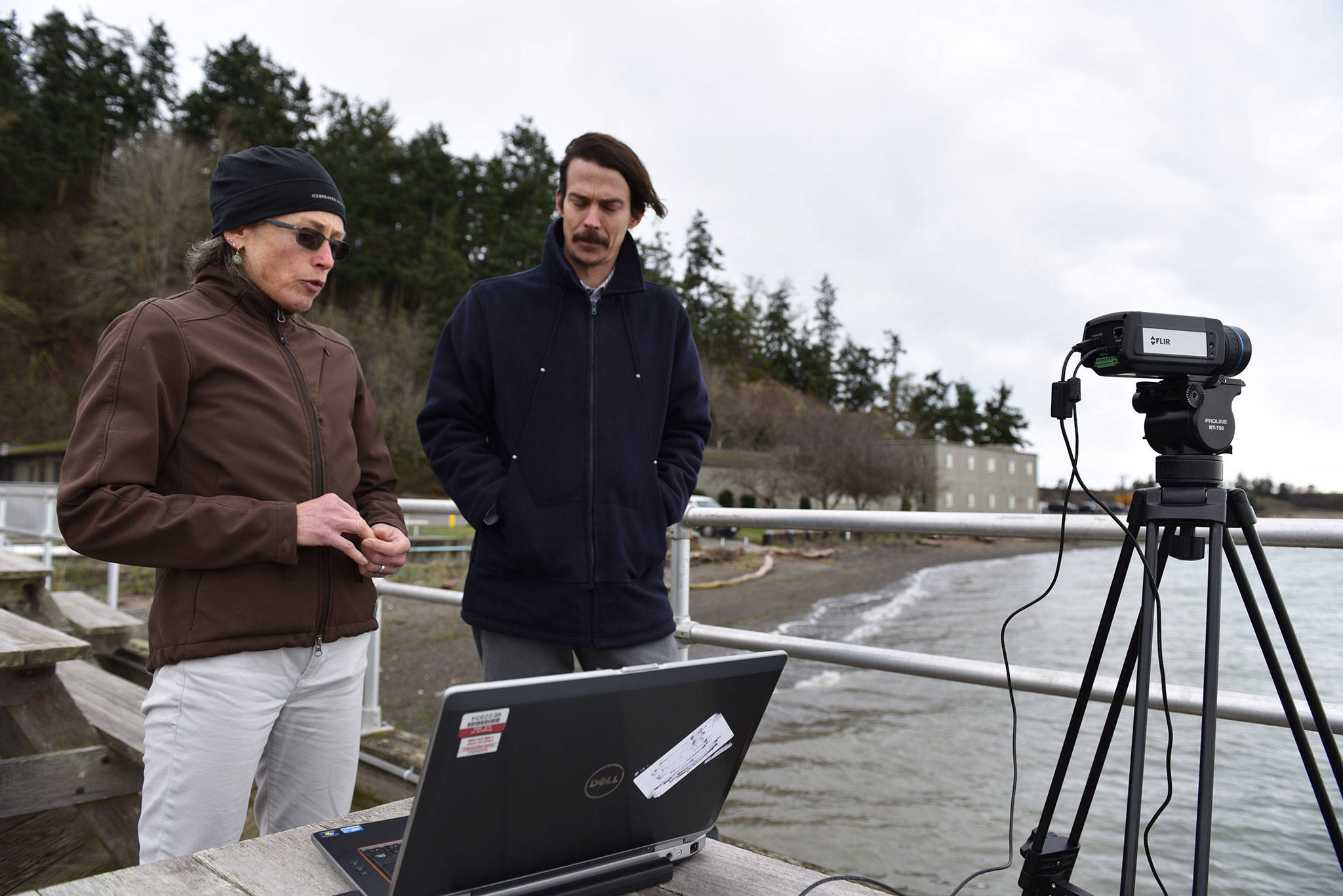Sequim researchers are investigating ways to help birds, bats and wind turbines better co-exist over ocean skies.
Engineers at the Pacific Northwest National Laboratory’s Marine Sciences Laboratory in Sequim have been working with open-source software ThermalTracker to find the best method for capturing flight patterns of winged creatures to help developers locate optimal sites for offshore wind projects.
Shari Matzner, senior research engineer in Sequim, said the software helps identify where birds and bats are flying and if wind projects could be a barrier to flights or are already barriers at existing wind farms.
She said aside from collisions, turbines could affect animals’ expended energy.
“All wild animals have a tight energy budget and if they have to go out of their way, it could affect their ability to survive,” Matzner said.
Ideally, engineers’ efforts are to help developers identify possible issues impacting birds and bats so that current/future wind farm operations can be adjusted accordingly, she said.
Department of Energy staff are using the software on offshore wind power because they estimate the U.S. could generate at least twice the electricity it currently uses because winds are stronger on the ocean rather than land.
How it works
ThermalTracker uses thermal imaging, similarly to night vision goggles, to track bird and bat paths and the frequency of how much their wings go up and down over a certain amount of time. The software’s algorithms can translate video and compress 10 second clips into single images to get an animal’s entire path.
Matzner said engineers completed the first version of the software last year and the camera will work in day or night and biologists can look at a spreadsheet of all the tracks.
In turn, they can make assumptions about where birds and bats are traveling and make recommendations to wind farm developers where to put their farms, Matzner said.
“That’s exactly why this automated processing is important because to really understand the pattern you need to make continuous observations, ideally, over several months,” Matzner said.
She said today most field research is based on what biologists see, which can make it difficult to observe at night particularly for projective offshore wind power sites.
Department of Energy staff said the new technology could allow for long-term monitoring, which could mean less labor costs, too.
The Sequim team continues to work on expanding ThermalTracker to have “stereo vision,” or 3-D video, using two thermal cameras to provide depth perception.
Matzner said this could help biologists better identify birds and bats based on their size and what their more specific flight paths may be and if it that conflicts with current and/or future turbines.
Engineers are also working on allowing the program to work in real time and record only when a bird or bat or object flies across screen, saving hard drive space.
Implementation
Biologists at Biodiversity Research Institute in Portland, Maine, have been testing ThermalTracker this summer to compare the software’s results with field observations, which Matzner and fellow staffers are using to refine the algorithms.
Wing Goodale, deputy director of Biodiversity Research Institute, said developing this technology will promote a better understanding of the nature of wildlife risks, or lack thereof, and reduce uncertainty about the potential for unintended impacts during operation.
“These cameras could provide a reliable method of detecting bird and bat response to offshore wind projects where it is not possible to conduct traditional wildlife monitoring,” Goodale said.
Matzner said using wind power is promising and that she and other researchers want to “go forward in a responsible manner.”
She said the push for software like ThermalTracker in the U.S. is because the country is behind other countries and continents in offshore wind energy innovation such as in Europe.
WindEurope, formerly the European Wind Energy Association, reported in its “The European offshore wind industry key trends and statistics 2016” that wind power grew by about 48 percent from 2015-2016 in Europe and it has about 12,631 megawatts from 3,589 grid-connected wind turbines in 10 countries.
Rhode Island’s Block Island Wind Farm is the U.S.’s first commercial wind farm and earlier this year, approval was granted in New York for South Fork Wind Farm, a 90-megawatt development 30 miles southeast of Montauk.
Matzner said staff with the Department of Energy’s goal is to find a commercial company to license the labortatory’s first version of ThermalTracker and bring it to market in 2018 and that it’s likely they’ll continue working on the software for at least a year or two in Sequim.
Matzner and her team have worked on the project in some form since 2012 with current funding coming from the Department of Energy’s Office of Energy Efficiency and Renewable Energy.
For more information about the Department of Energy, visit science.energy.gov/ and for more on Battelle, who operates the Sequim Marine Science Laboratory, visit battelle.org/.
For more information on the Biodiversity Research Institute, visit briloon.org/.
ThermalTracker’s original source code can be downloaded for free at github.com/pnnl/ThermalTracker.
Reach Matthew Nash at mnash@sequimgazette.com.



